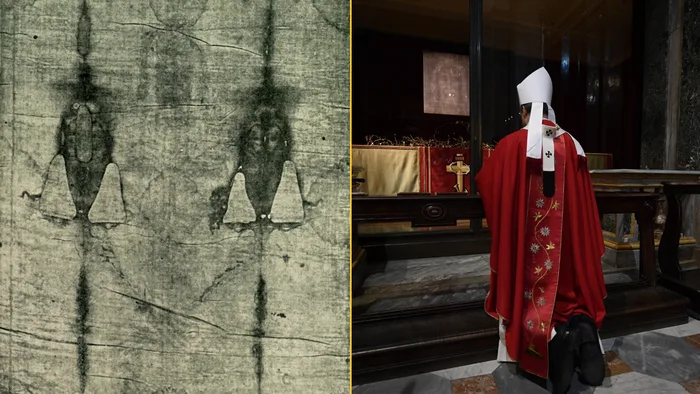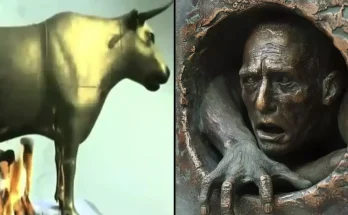This is a huge step forward in this mystery
A controversial linen shroud which some believe was the one that Jesus was buried in has puzzled the world for centuries.
The shroud was first exhibited in 1350 as the Shroud of Turin that was used to wrap the body of Jesus after his crucifixion.
Otherwise known as the Holy Shroud, it bears a faint image of the front and back of a bearded man, which many believe is Jesus’ body miraculously imprinted onto the cloth.
However, research in the 1980s seemed to debunk this theory after dating the material to the middle ages – hundreds of years after his death.
Italian researchers have now used a new technique involving x-rays to date the material and have confirmed that the original theory could be true as they believe the cloth was manufactured around 2000 years ago – the time Jesus was alive.
They claim that the fact the timelines add up, gives credit to the idea that the faint, bloodstained pattern of a man with his arms folded could have been left behind by Jesus’ dead body.
The Bible says that Joseph of Arimathea wrapped his body in a linen shroud and placed it inside the tomb.
Matthew 27:59-60 reads: “Then Joseph took the body and wrapped it in a new linen cloth. He put Jesus’ body in a new tomb that he had dug in a wall of rock. Then he closed the tomb by rolling a very large stone to cover the entrance. After he did this, he went away.”
The cloth has intrigued historians, Christians and skeptics since it was first presented to the public in 1350.
French knight Geoffroi de Charny presented it to the dean of the church in Lirey, France proclaiming it as the Holy Shroud.
It has been preserved since 1578 in the royal chapel of the cathedral of San Giovanni Battista in Turin, Italy.
It is said the cloth shows faint, brownish images on the front and back depicting a gaunt man with sunken eyes who was about 5ft 7 to 6ft tall.
In 1988, a team of international researchers analyzed a small piece of the shroud using carbon dating and determined the cloth seemed to have been manufactured sometime between 1260 and 1390 AD.
This technique used the decay of a radioactive isotope of carbon (14C) to measure the time and date objects containing carbon-bearing material.
Scientists at Italy’s Institute of Crystallography of the National Research Council conducted a recent study using wide-angle X-ray scattering (WAXS).
The technique measures the natural aging of flax cellulose and converts it to time since manufacture.
Eight small samples of fabric were studied, putting them under an X-ray to uncover tiny details of the linen’s structure and cellulose patterns.
Cellulose is made up of long chains of sugar molecules linked together that break over time which is how scientists are able to determine how long the garment has been around.
The study was published in the journal Heritage which read: “The data profiles were fully compatible with analogous measurements obtained on a linen sample whose dating, according to historical records, is 55-74 AD, found at Masada, Israel [Herod’s famous fortress built on a limestone bedrock overlooking the Dead Sea].”
Following this new research, experts have said the linen’s authenticity should no longer be in doubt but others are holding onto the notion that it is fake due to the 1988 radiocarbon dating analysis results.
Furthermore, the researchers in this latest study compared the shroud to samples from linens manufactured between 1260 and 1390 AD and found that none were a match.
Lead author Dr Liberato De Caro said in a statement that the 1988 test should be deemed as incorrect because ‘Fabric samples are usually subject to all kinds of contamination, which cannot be completely removed from the dated specimen.’
He said: “If the cleaning procedure of the sample is not thoroughly performed, carbon-14 dating is not reliable.”
More than 170 peer-reviewed academic papers have been published about the mysterious linen since the 1980s with many concluding that it is genuine.



